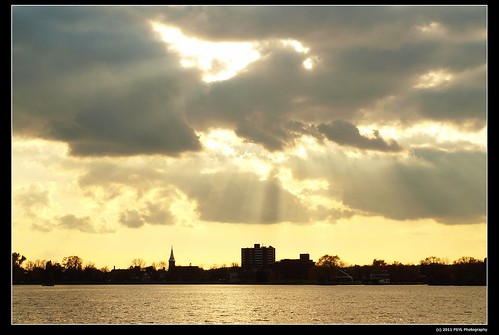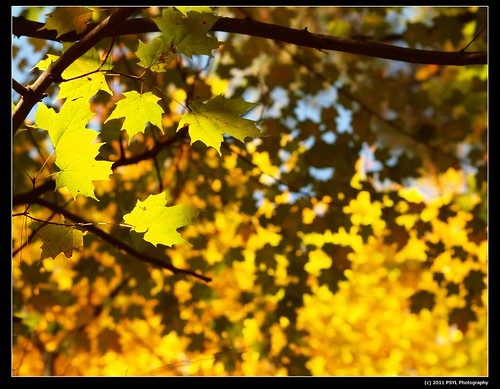"There are some who can live without wild things, and some who cannot. These essays are the delights and dilemmas of one who cannot" - Aldo Leopold
2011/10/31
2011/10/30
Trent's Blue Trail
Below are some of the photos I took this afternoon.

2011/10/29
House Centipede
2011/10/27
Successful Owl-Banding Last Night
 Inside the banding cabin - nice and homely.
Inside the banding cabin - nice and homely.2011/10/25
Rainy/Sunny Day
While this was going on, I was using the computer facing the window and I could see the small invasions of chickadees, sparrows, and juncos to the trees right outside my window. I also spotted a White-breasted Nuthatch, so overall, it was an interesting morning.
In the afternoon, while it was still sunny, I went out to get some grocery and took my camera with me. I took some photos of the birds feeding from the wet ground.
 Chipping Sparrow (Spizella passerina)
Chipping Sparrow (Spizella passerina)2011/10/23
First time visitng Miller Creek Wildlife Area
However, biking to MCWA was tougher than I thought. It is probably because I haven't bike in awhile, or that there are many "hills" along the way, or that there are no bike trails and I had to bike along 70km-limit lanes. Nonetheless, I surprisingly found the place about an hour later without getting lost at all.
 Along the way, I saw this snake in the middle of the road with some blood around it. At first I thought it was dead, but a closer look showed that it was still alive. I was unsure if I should leave it be and have other cars end its life sooner or bring it aside and hopefully it will still survive. I chose the latter.
Along the way, I saw this snake in the middle of the road with some blood around it. At first I thought it was dead, but a closer look showed that it was still alive. I was unsure if I should leave it be and have other cars end its life sooner or bring it aside and hopefully it will still survive. I chose the latter.Getting a bike and biking along Trans-Canada trail
After getting my bike and air pumped into the tires, I went for a bike ride to Jackson Park and then the Trans-Canada trail.
2011/10/19
School stuff
I just handed in an assignment for a class - a "letter of intent" for my M.Sc thesis project. It gives people an idea of what I am working on.
-------------------------------------------------------------------------------------------------
The interaction between dioecious plants and their associating pollinators is poorly known, especially in Arctic ecosystems where plants and insects are extremely sensitive to potential spatial and temporal mismatches. Dioecism in flowering plants is a sexual system where a plant bears either female or male flowers, which allows for the selection of the most favourable genetic combination. For many dioecious plants, the males and females in a population are observed to segregate from each other along an environmental gradient. One of the proposed selective mechanisms causing this spatial segregation of sexes consists of the differences in reproductive investments between males and females [1]. Females require and spend more resources and energy on the productions of ovaries, fruits, and seeds than males that invest primarily on pollen grains. This major difference in reproduction biology indicates that females are more likely to occupy resource-rich habitats than males, resulting in spatial segregation of sexes. The proposed project will select a dioecious plant species and study the biotic and abiotic variations within and between several populations. The variations include female to male ratios, phonological and morphological differences between females and males during the growing season, the resulting fruit set and seed set at the end of the growing season, and the surrounding abiotic environmental factors. The information will be tested for their associations with pollinator richness to determine the effects of pollinator abundance and diversity on the reproductive successes of dioecious females.
In addition to understanding the pollination ecology of dioecious plants, the proposed project will also aim to address the status of pollinators in natural ecosystems across northern Canada. Pollination is an extremely valuable ecosystem service carried out by managed and wild pollinators for many agricultural crops and wild plants. Without pollinators and the plants that depend on them, ecosystems will be reduced or lost, and food security for humans will become seriously jeopardized. Most insect pollinators worldwide are in a state of decline and, because of their importance, there is a growing concern in the ecological community to not only determine the potential drivers causing the declines, but to also develop mitigating solutions [2]. One of the main potential drivers of global pollinator declines is climate change [2]. However, studies pertaining to the effects that climate change has on pollinators in the Arctic, one of the world’s most important ecotones, remains scant. Therefore, the proposed project will also establish baseline knowledge on pollinator abundance and diversity in northern Canada by trapping and identifying pollinators that visit the dioecious plant species of interest.
To fully account for wild pollinator abundance and diversity Arctic ecosystems, the proposed project will be carried out in Ivvavik National Park of northern Yukon: a unique region in the Arctic ecosystem that was unglaciated during the Ice Ages and now has distinct landscapes and biodiversity. The plant species in study will be Shepherdia canadensis, one of the dioecious plant species in the Arctic whose berries are consumed by local First Nations people as well as by wildlife such as grizzly bears. Very little is known about the pollination biology of S. canadensis and the associating pollinators, however, especially given Arctic’s short growing season. Overall, I hypothesize that along an elevation gradient where harsher environmental conditions are found in higher elevations than lower elevations, female S. canadensis will be more dominant in lower elevations and vice versa for the males. Furthermore, I hypothesize that pollinator abundance and diversity will also differ along the elevational gradient and result in different reproductive success rates, such as fruit set and seed set, of the females.
My objectives are to: 1. Establish a baseline inventory of pollinator abundance and diversity in Ivvavik National Park; 2. Determine the sex ratio and sexual dimorphism of dioecious S. canadensis populations in Ivvavik National Park along an environmental gradient (e.g. elevation gradient); and 3. Examine the effects of pollinator abundance and diversity on the reproductive success rates (e.g. fruit set and seed set) of S. canadensis plants in different populations along the environmental gradient. This project is important and relevant in terms of its fundamental goals of understanding the effects of sexual selection by pollinators on the ecology and evolution of dioecious plants and the impacts of climate change on wild pollinators and plants in Arctic ecosystems.
[1] Bierzychudek, P, Eckhart, V. 1988. Am. Naturalist. 132: 34; [2] Potts, S. et al. 2011. TREE. 25: 345.
-------------------------------------------------------------------------------------------------And then today we had a lecture on how to communicate to the general public by one of Trent's professors.
Here are some points, quotes, and articles that I thought was pretty good:
- Scientific research is like putting a jig-saw puzzle together without the picture on the cover box, there will always be pieces of uncertainty.
-There is an ethical justification for conservation biology - can we knowingly allow a species to die off? Human survival depends on many species, and now other species' survival depend on us!
-"The bird and bees, however, beg to differ. Myriad wild species are showing polward shifts in their distribution and changes in the timing of breeding and flowering - an unmistakable biological footprint."
-Tracking long-distance songbird migration by using geolocators by Bridget Stutchbury and colleagues.
-Climate dominoes tumble slowly by James Schaefer.
-Ecological science and sustainability for the 21st century by MA Palmer and colleagues.
-Preparing for an interview - know the goals of the interview and the reporter, anticipate tough questions, identify other experts, know the headlines, be concise, conversational, and catchy, and don't repeat the reporters' words.
-Take control the direction of the interview by using phrases:
- "Yes...in addition..."
- "No...let me explain..."
- "I don't know that...but I do know..."
- "The real issues are ..."
- "What you are really asking is..."
- "Let me put it in a different perspective ..."
2011/10/17
2011/10/14
Visiting Algonquin this weekend
2011/10/11
2011/10/10
Northern Saw-whet Owl banding
The project focuses on Northern Saw-whet Owl (Aegolius acadicus), the smallest owl in eastern North America, and bands them every October during their winter migration down south. We set up mist nets at Trent's James McLean Oliver Ecological Centre and used playbacks to attract these curious birds. We check the nets every 30 minutes and start from sunset until midnight.
Yesterday we caught four owls in total and below are some photos from last night.
2011/10/09
Autumn in Jackson Park
2011/10/08
Friday before the long weekend
And today, I brought it back to school (along with the lens) and took photos of it on the dead yarrow.
 Don't know what species this is, but it is still pretty cool-looking.
Don't know what species this is, but it is still pretty cool-looking.2011/10/06
New place to bird-watch at Trent

Unfortunately I didn't bring my telephoto lens today. So I will have to try to take bird photos next time. The top left photo was a Turkey Vulture flying over me, thinking I am dead or something. Nope, still alive.
Also, I signed up for owl banding on this (and the next) Monday but it was drizzling in the afternoon so it was cancelled. And now the weather forecast predicts good weather throughout the long weekend. Argh!
2011/10/02
Walking along Otonabee River and checking out Head of the Trent
In the morning though, it was windy, cloudy, and cool outside. But the sky cleared in the afternoon and it was beautiful then. Since I am not a fan of large crowds anyways, I decided to take my time and slowly walk along the Otonabee River and towards Trent.
 Clear sky
Clear sky





